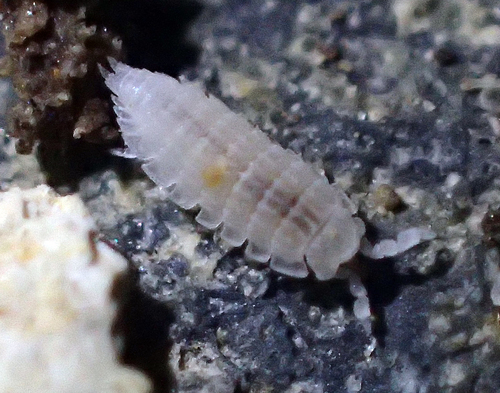First observation of the ant-woodouse Platyarthrus aiasensis on iNat
Our resident woodlice hunter @cedric_lee strikes again. This time he found an observation of a rare woodlice that lives communally with ants called Platyarthrus aiasensis.

This species is from the Mediterranean and was first discovered in the Americas in 1989. It has since been reported from CA and TX with just 2 observations total in GBIF proving that this is a rare find indeed!
In May @berkshirenaturalist posted an observation another member of the genus Platyarthrus hoffmannseggii in CT. Its also non-native to the US but has become established in the North East. Its smoother and flatter than Platyarthrus aiasensis.

This brings our woodlice species count for the US up to 33. Still a small fraction of the 113 reported species from the US meaning there's still alot to discover - get out there and find me some woodlice!
Also apologies for the US focus to this post. Lots of cool woodlice postings coming in from elsewhere, but I definitely lack the expertise to put most of the non-US species in context (I also lack my secret weapon Prof Wright from Pamona @jcwright - who has been invaluable helping confirm IDs). If you are or would like to become/recruit a woodlice 'expert' in your neck of the woods, join our effort!





Comments
Haha -- woodlice hunting field trips coming up! :)
Are there any good guides to North American woodlice available anywhere? I can find a lot from the UK online but very little for N. America. Thanks!
I like http://research.nhm.org/pdfs/4571/4571.pdf but it has some suspect records. I've been trying to build out https://www.inaturalist.org/guides/1503 for california
Hi Loarie! Awesome US guide. Not sure how useful a CA guide would be for me here in NY but I commend your work on accumulating a guide to those species! As for the larger PDF, that's awesome! Are you aware of any identification guides? It looks like Jass and Klausmeier focus mostly on archiving the species and describing the ranges? Maybe it would be useful to compile the images from the cited papers into a single document. If I do this, I'll be sure to send along.
Add a Comment